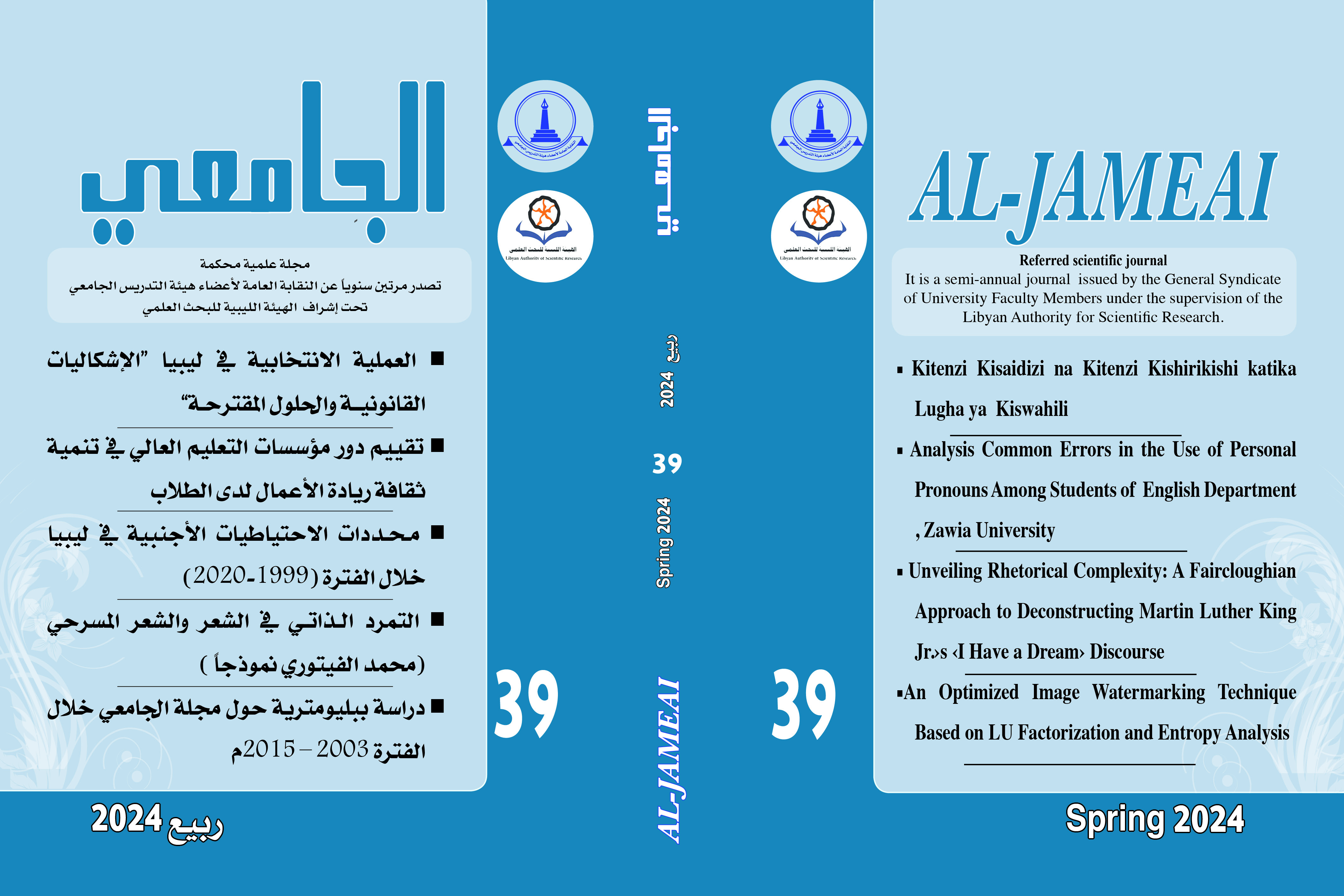محددات الاحتياطيات الأجنبية في ليبيا خلال الفترة (1999-2020)
دراسة قياسية باستخدام نموذج الانحدار الذاتي للمتباطئات الموزعة ARDL
Abstract
ملخص الدراسة:
هدفــــــت الدراسة إلى التعــــــــرف على محددات الاحتياطيات الأجنبية في ليبيا خلال الفترة (1999-2020) والمتمثلة في سعر الصرف ومعدل التضخم، وحجم الصادرات والواردات والناتج الإجمالي، من خلال بناء نموذج قياسي يتم تقديره باستخدام نموذج ARDL لبيانات نصف سنوية عن الاقتصاد الليبي خلال الفترة الممتدة (1999-2020).
وبينت النتائج وجود علاقة عكسية ومعنوية بين حجم الاحتياطيات الأجنبية وسعر الصرف ومعدل التضخم والناتج الإجمالي وهو ما يتفق مع النظرية كما جاءت العلاقة بين حجم الاحتياطيات الأجنبية وحجم الصادرات عكسية وما يخالف النظرية الاقتصادية، بينما جاءت العلاقة طردية ومعنوية بين حجم الاحتياطيات الأجنبية وإجمالي الواردات وهو ما يتفق مع النظرية.
وأوصت الدراسة بضرورة انتهاج سياسة نقدية فعالة تعمل على تخفيض معدلات التضخم والحفاظ على استقرار سعر الصرف ودعم العملة المحلية، ووضع خطط وسياسات خاصة فيما يتعلق بتحديد الحجم الأمثل للاحتياطيات الأجنبية.
Summary:
The study aimed to identify the determinants of foreign reserves in Libya during the period (1999-2020), represented in the exchange rate, inflation rate, volume of exports and imports and gross output, by building an econometric model that is estimated using the ARDL model. For semi-annual data on the Libyan economy during the period (1999-2020) using the Eviews-13 program.
The results showed an inverse and significant relationship between the volume of foreign reserves, the exchange rate, the inflation rate and the gross product, which is consistent with the theory, and the relationship between the volume of foreign reserves and the volume of exports was inverse and contrary to the economic theory, while the relationship was positive and significant between the volume of foreign reserves and total imports, which is consistent with the theory.
The study recommended the need to adopt an effective monetary policy that reduces inflation rates, maintains the stability of the exchange rate, supports the local currency, and develops special plans and policies with regard to determining the optimal size of foreign reserves.
Downloads









